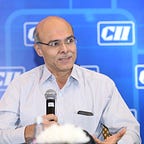Do you know what is the real challenge for rolling out 5G in India? It is not about the availability of technology, devices, or spectrum. It is something totally different. The 5G technology is now mature and becoming more empowering than ever before. The devices are already getting seeded in the market, and their intensity will increases as 5G networks get deployed. Spectrum is also available in abundance, in all three band kinds — Sub GHz (less than 1GHz, like 600, 700 MHz), Mid Band (3.5 GHz), and Millimeter Wave (24/28 GHz). If the issue isn't about these three, then what is the issue? The real issue is about the affordability of the Sub GHz spectrum (600 & 700 MHz bands). But why do we need an affordable Sub GHz spectrum to roll out 5G in India? Isn’t the affordability of 3.5 GHz and Millimeter Wave not enough? No. Let me explain the reasons.
Why is Sub GHz Spectrum Critical?
5G can be deployed using two approaches. a) Non-Standalone; b) Standalone. In the former approach, the 5G layer running on 3.5 GHz & Millimeter Wave piggybacks on the existing 4G networks and integrates itself with it. In other words, the consumers see the service as a combination of 4G and 5G integrated into their handset. He/She falls back on the 4G network when using voice, and at times when the 5G network is unavailable (Note — 3.5 GHz and Millimeter Waves have much poorer coverage compared to 4G spectrum in lower spectrum bands). This layered approach prevents the operators from offering many advanced 5G enterprise services, like network slicing and 5G voice. Due to this reason, most of the leading operators of major countries of the world are migrating to the latter approach — Standalone. In this approach, 5G gets deployed as an independent vertical which no direct linkage with the existing 4G network. And since it is impossible to create a standalone network by only using mid-band (3.5 GHz), and Millimeter Wave (26 & 28 GHz), we need the Sub-GHz spectrum (600, 700, 800 & 900 MHz) to drive network quality/coverage and to enable 5G voice.
Why can’t the SPs use their Existing Sub GHz Spectrum?
The reason — As the spectrum is currently used for offering 4G services. And anything that can get squeezed out will be incremental and insignificant to be used for 5G. As to create a seamless standalone 5G network, we need at least 2x15 MHz of Sub GHz spectrum, preferably in one single band. This is needed in order to maintain a reasonable consumer experience once he/she falls into the Sub GHz band spectrum, especially true at the edge of the network (like indoors, in the lift, etc where high-frequency bands can’t penetrate). There could be one more approach that the SPs can use called dynamic spectrum sharing. Here the layered approach of Non-Standalone and its shortcomings can get avoided. But this only works when the existing 4G spectrum is lightly loaded, which is not the case in India, and therefore not an option for the operators here.
What is the Real Challenge in acquiring new Sub GHz Spectrum?
The reason is embedded in our distorted legacy. Historically, the prices of spectrum in India have been unusually high. This is especially true for sub GHz bands like 800 & 900 MHz bands. The real culprit was the exponentially high price of the 2100 MHz band in the year 2010. As this auction took place against the backdrop of the 2G scam, which drove the spectrum prices disproportionately high due to lopsided demand triggered by the subsidized entry of new telecom companies. And then in the future auctions, the price of 2100 GHz band (3G) was used to extract the price of subs GHz band — 700, 800 & 900 MHz. The prices of 800 & 900 MHz were initially set as 2 times 3G (2100 MHz), and 700 MHz as 4 times. Later these prices got lowered a bit, but never at a level that we can call “realistic and optimal”. Now, given this legacy, the regulator (TRAI) will find it extremely difficult to lower the prices of the new 600 & 700 MHz bands — which are critical for the deployment of a quality 5G network in India. Just to put things in perspective. The current price of the 800 MHzis Rs 5000 Cr/MHz. Assuming 600 & 700 MHz prices will be pegged at this level, in order to acquire a 2x15 MHz spectrum SP has to shell out Rs 75000 Cr (10 Billion USD)! This he will have to do on top of the funds needed to acquire 3.5 GHz & Millimeter-Wave Bands.
Conclusion
The Indian operators need access to a new subs GHz band (600 & 700 MHz) in order to unlock the true value of 5G. And for the consumers the value is not just data speeds alone, it is also about reliable and ubiquitous voice connectivity. The consumer's experience with the current 4G/GSM voice is pathetic. So much so that most of the time we end by calling into WhatsApp. With 5G this nightmare has to end. Also, the operators should not be in any way constrained in their service offering capabilities (5G blended on top of 4G will have those constraints). These issues can be easily overcome by deploying a standalone 5G network, laced with a 5G voice (called NR voice) running on top of a large chunk of Sub GHz spectrum. Only then will make 5G more useful and valuable for India and its consumers.
(Views expressed are of my own and do not reflect that of my employer)
PS: Find the list of other relevant articles in the embedded link.
